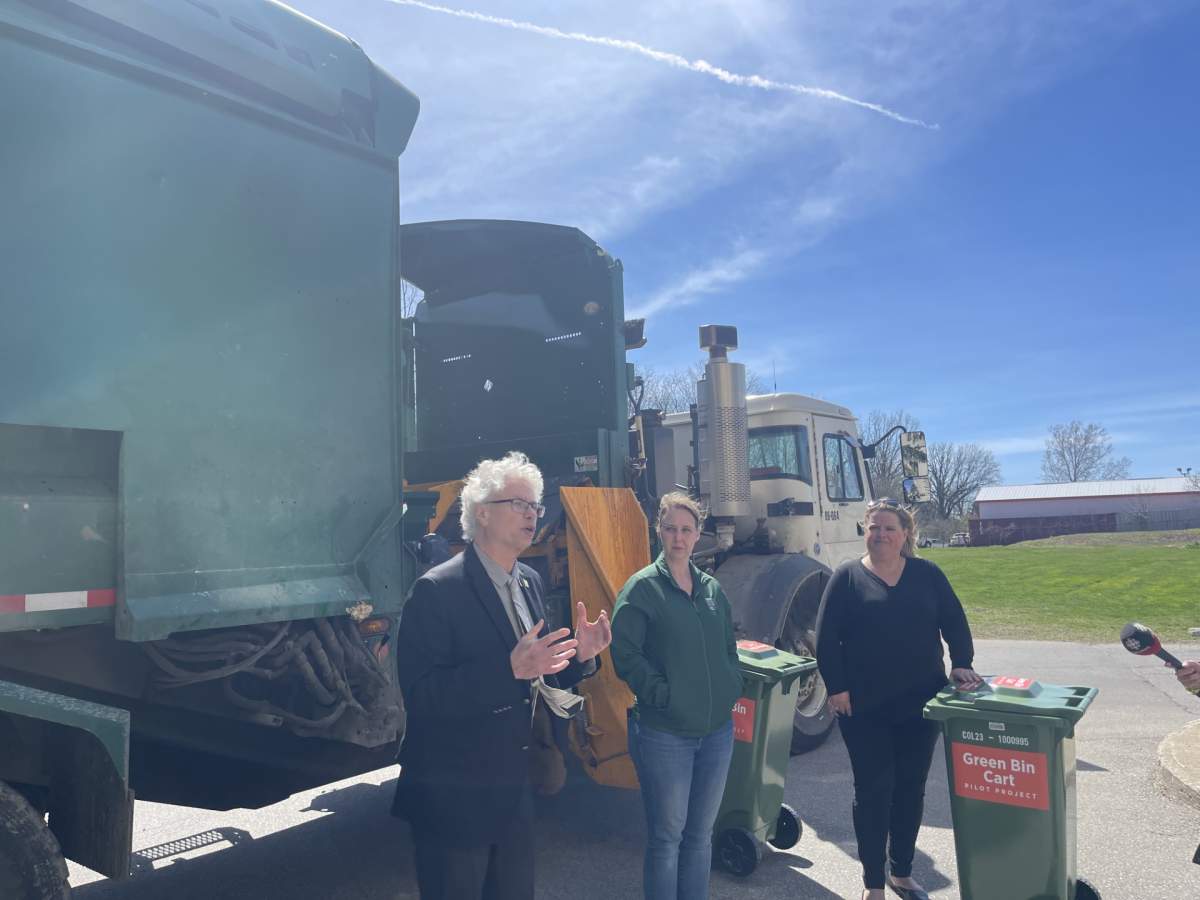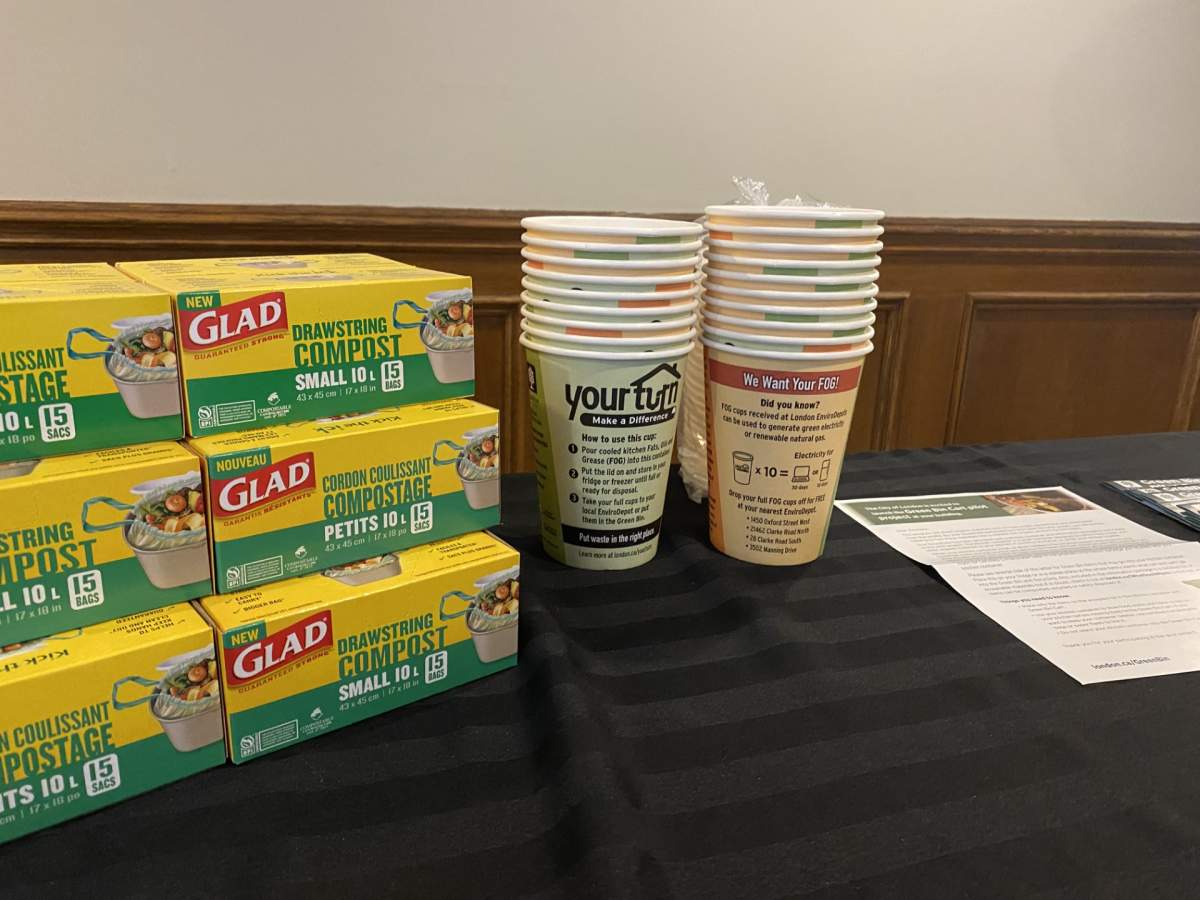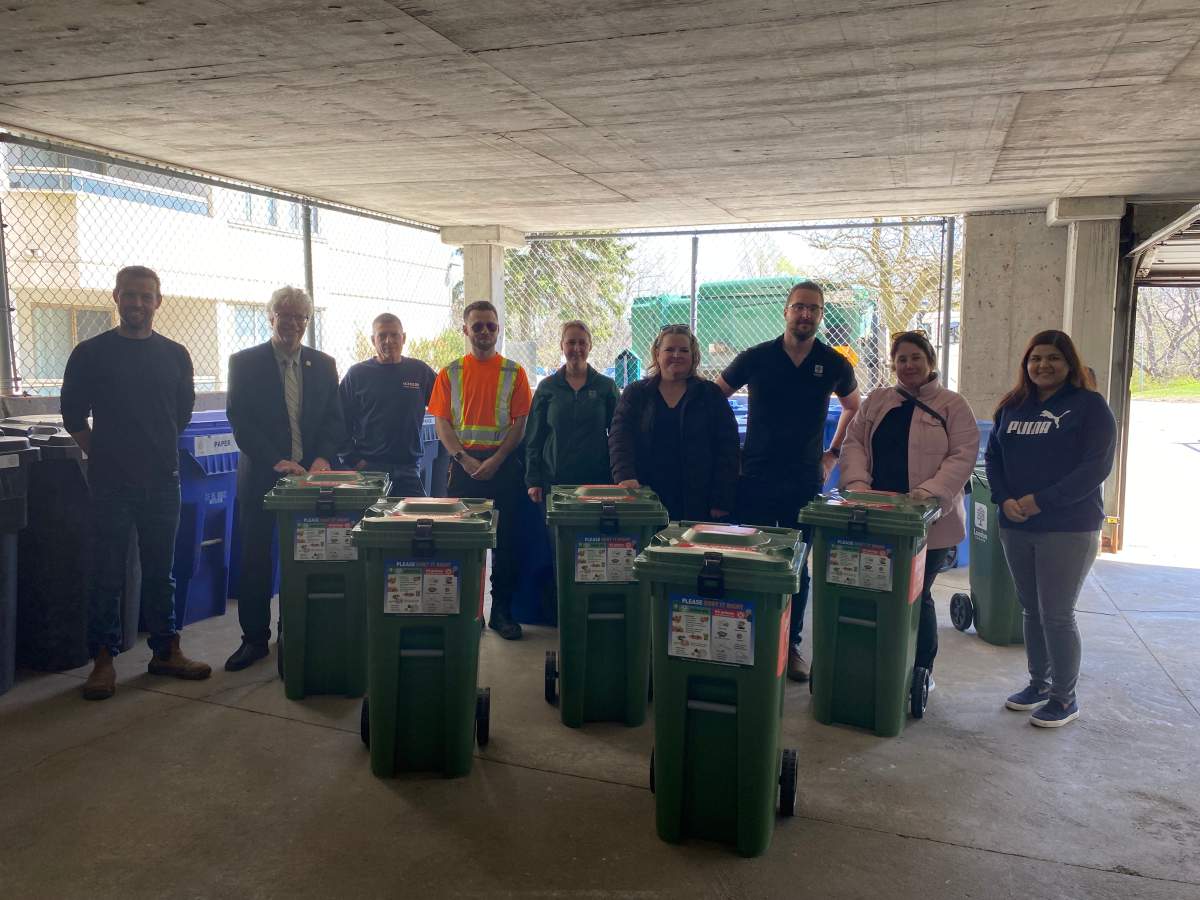Starting Friday, the City of London will be rolling out a green bin pilot project for multi-unit residential buildings.

The city aims to have the green bins at 10 to 15 medium- and high-rise residential buildings within the next two months and has already set them up at two buildings across the city. On Wednesday, bins were placed in disposal areas at two Norquay Management properties to help residents separate food waste from other garbage.
The project is beginning on a small scale to learn about participation, resident feedback and the amount of material that ends up being collected. This also provides information that allows for a better understanding of program costs. The project will determine the needs of buildings in terms of green bin sizes.
After food waste is collected by garbage pickup, it will be brought to a conversion facility and turned into electricity to go back into the local grid, which in turn reduces the overall costs of the program.
“Why bury what we can repurpose?” says Jay Stanford, director of climate change, environment and waste management.

Get daily National news
In January, the city started the first stage of the project with curbside pickup for single-unit dwellings. About one-third by weight of the waste that occurs in households is food, and blue box recycling makes up only 15 per cent.
“Working together to sort this through is the right way of doing a project,” Stanford says. “Other cities like Ottawa, Hamilton and Toronto have some programs in place, and we’re also going to learn from them as we go.”
Multi-unit residential green bin pickup will act as waste diversion as many projects around the city move into intensification and infill projects. With an increased number of apartment and multi-unit residential buildings being built with three and four bedrooms, the amount of food waste generated by those units will be around the same as single-unit homes.
Lisa Smith, senior property manager at Norquay Property Management Ltd., jumped at the chance to be a pioneer in the pilot project.
“Our tenants ask, quite often, if they are going to be included in something like this. They’re very active, and so when this came forward, I knew they would participate,” Smith says. “Hopefully (the project) goes throughout all of London after we do this.”
All residents involved in the pilot project have been given a kitchen container. The main difference from the existing curbside program is not what material is collected, but rather where the material is delivered. In medium- and high-rise units, the material will be taken down to a centralized area, where it is picked up on scheduled garbage pickup dates.
“It’s only been two days, and if you can believe it, (the residents) have already filled up a bin and a half,” Smith says.
If successful, the project will continue for the next six months to a year, and the city and province hope it will become a permanent feature. Nine hundred buildings in London are eligible for the program, which represents around 60,000 total units.
“Diverting even half of a household’s food waste would mean the project is a success,” Stanford says. “I think now that we’ve got two (buildings) out of the gate, others will be more confident in what they can do since they can come down and see something in place.”
You can find more information on the pilot project on the city’s website.















Comments